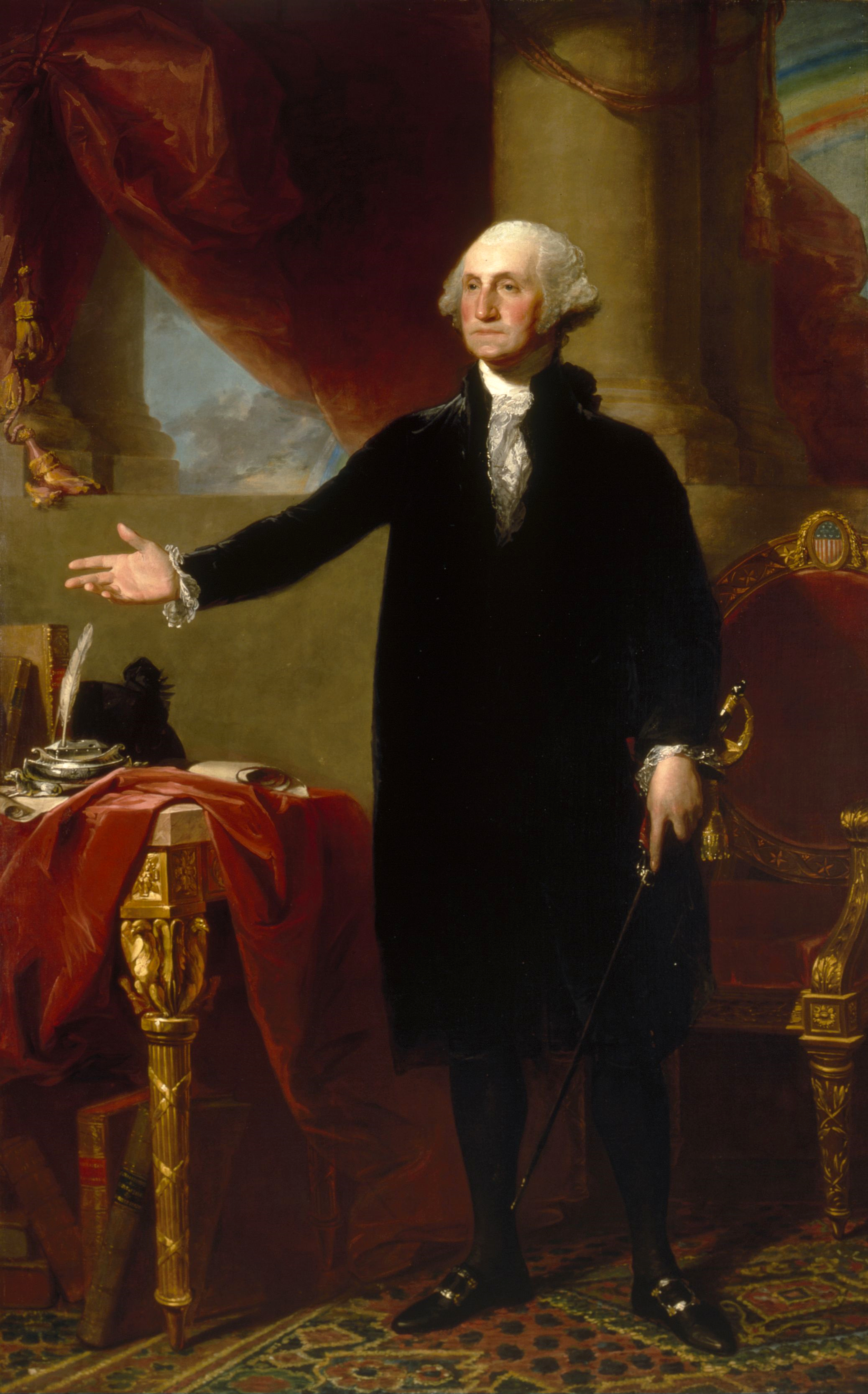
Although George Washington sat for the most prominent artists of his day, Gilbert Stuart’s images of the first president and hero of the American Revolution have been so widely reproduced that it is almost impossible for Americans to conceive of Washington in any other way. Less than a quarter-century after his death, the writer John Neal had already proclaimed, “The only idea we now have of George Washington is associated with Stuart’s Washington.”
Stuart was born in Newport, Rhode Island, to an immigrant Scotsman who made his living grinding tobacco snuff, an important commodity in colonial America. Apprenticed to a limner — an artisan painter without formal training — he showed an innate talent that soon brought him commissions from prominent clients. On the eve of the Revolution, he sailed for England to learn art in the European tradition. During his eighteen years abroad, Stuart achieved renown as a portrait painter who worked best from the living model, laying down his colors carefully one over the other — “not mixed,” he explained, “but shining through each other, like blood through natural skin.”
His ability to charm clients and set them at ease allowed him to capture their inner character, which (following a popular theory called physiognomy) he believed was reflected in their physical 3-B Gilbert Stuart (1755–1828), George Washington, 1796. Oil on canvas, 971 ⁄2 x 621 ⁄2 in. (247.6 x 158.7 cm.). National Portrait Gallery, Smithsonian Institution, Washington, D.C.; acquired as a gift to the nation through the generosity of the Donald W. Reynolds Foundation. features. For Stuart, Washington’s features indicated a man of great passions. The painter’s daughter, interviewed in 1867, recalled that her father had mentioned this to a mutual friend of Washington, adding, however, that the president kept his temper under wonderful control. When the same friend related the remark to the Washingtons, Martha was taken aback, but the president simply smiled and said, “He is right.”
When Gilbert Stuart returned to his native land in 1793, he soon set out for Philadelphia, the largest city and the temporary capital of the new nation, with the intention of seeking a commission to paint the president. A portrait of such a revered individual would bring the artist fame and more sitters. Before the age of mass reproduction, a painter could make hefty sums through copies of original works, either by his own hand or through engravings to which he would hold copyright. Stuart knew that people, both in America and abroad, desired to have a portrait of George Washington.
By 1795, Stuart had the first of three portraits of the president completed. It was immediately successful. Washington sat for Stuart at least once more, in April 1796; and the president and his wife visited the artist in 1797, perhaps in reference to an unfinished bust-length portrait now at the Boston Athenaeum. An engraved version of the Athenaeum portrait is the one people see every time they pull a dollar bill out of their pockets.
The full-length Lansdowne portrait reproduced here summarizes Washington’s role as leader and father of his country and is one of Stuart’s most impressive works. It was painted in 1796 for William Petty, the first marquis of Lansdowne, a British admirer of Washington. The work is conceived in the grand European manner used to depict nobility: The president stands in the classical pose of an orator before a background of draperies, columns, and a glimpse of landscape. Yet the details are distinctly American. Washington wears the black velvet suit he used for formal occasions. On the table, volumes of the Federalist and the Journal of Congress refer to the foundations of government and Washington’s role as head of state. The medallion emblazoned with the Stars and Stripes on the back of the chair is part of the Great Seal of the United States. When the portrait was displayed in New York City two years later, an advertisement noted that Stuart had painted Washington, “surrounded with allegorical elements of his public life in the service of his country, which are highly illustrative of the great and tremendous storms which have frequently prevailed. These storms have abated and the appearance of the rainbow is introduced in the background as a sign.”
Many anecdotes relate the difficulty Stuart had in breaking through Washington’s public manner. It took all of the painter’s considerable conversational talents to draw out the inner man. He was apparently successful, for Washington’s grandson noted that the Lansdowne portrait was “the best likeness of the chief in his latter days.”

